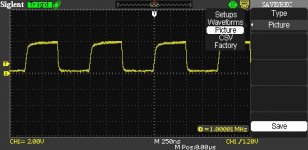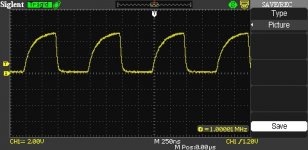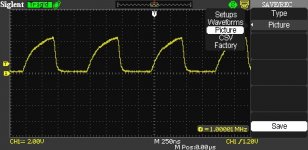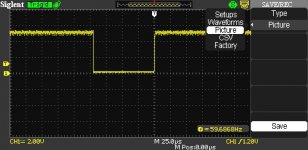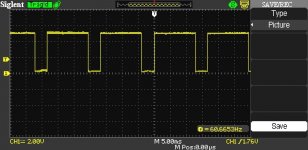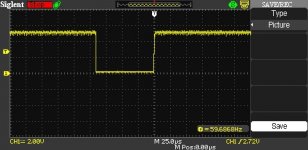jimdinunzio
Member
- Joined
- May 24, 2015
- Messages
- 28
Hi,
I started by replying another thread and decided I better start a new one rather than hijacking that one!
My first posts start here:
http://www.vintage-computer.com/vcforum/showthread.php?47472-New-Project-Commodore-Pet-2001#4
First I'd like to thank all those who have contributed to this knowledge base on the PET. It's already helped me tremendously!
However, I'm now a bit stuck with a computer that boots to basic and is usable for about 10-15 minutes before hanging with "Illegal Quantity Error". Then you have to keep it off for 2 hours before it will work again for another 10 minutes. It's very frustrating after initially made good progress with this thing. Note: I do not have a scope... not yet anyway. The IRQ line is a steady low when the machine is hanging. More on that below.
I suspected the 6520 PIA #1 (handling keyboard/tape/blinking cursor) because without that chip the machine always boots. Thinking this was a thermal issue, I tried spray freezing different areas of the board and cycling power, and after that didn't work I even tried putting the whole thing in the freezer for 10 minutes. (the condensation scared me) No dice. It is more complicated than just temperature I guess. Could it be some lingering capacitance?
I've read several other repair blogs where a capacitor was acting up after warm up in the reset circuit. Not mine. The reset line seems good. Voltage supply lines seem good at a steady +4.85-5.10. Another blog reported the same exact symptoms of a hang after tape loading, but swapping the 6520 chip with the second one solved that problem. I've swapped them and had no change in behavior. I even warmed up the machine to the hang then swapped the #1 6520 with the other one which I had pulled out earlier.
I did an inspection of the board under a magnifier and improved some questionable solder joints. No change.
Then I checked the IRQ line during the hang. It is steady low. It seems like an interrupt occurred that never returned. Clock signal is still going. Could this be a flaky ROM problem involving the ISR somehow not returning from the interrupt or the IRQ line not rising when it is supposed to? There's a 3.3k resistor connected to 5v to do the rising and both look ok. With the PIA#1 out I noticed that the IRQ line at the 6502 is steady high meaning there are no interrupts occurring, so that's why it boots. Something is going wrong with interrupts. During normal operation the IRQ line is buzzing at least with the cursor. I guess my machine just gets sick of being interrupted!!
Could it be a bad capacitor somewhere even when measured voltages all seem stable? I bought some and am ready to start replacing old ones but not sure which ones to replace. Maybe the power electrolytic ones or decoupling ones near the 6520 or 6522?
I tried swapping a different 6502 from my old Apple II+ on a hunch, but the problem persisted.
Maybe I'm going too far down a rabbit hole. Any suggestions?
Next I'm planning to warm it up then pull the board out and do an integrity check on the ROM sockets.
Another thing I am thinking of doing is rig up test clips to connect to IEEE port and Keyboard plug to have the PET do its built in diagnostic during my 10 minutes of working computer. Has anyone had any luck with that? Other than that maybe I need to identify a flaky ROM, perhaps where that ISR is, or get a PET Vet.
Thanks for reading, and any suggestions would be welcome!
Jim
I started by replying another thread and decided I better start a new one rather than hijacking that one!
My first posts start here:
http://www.vintage-computer.com/vcforum/showthread.php?47472-New-Project-Commodore-Pet-2001#4
First I'd like to thank all those who have contributed to this knowledge base on the PET. It's already helped me tremendously!
However, I'm now a bit stuck with a computer that boots to basic and is usable for about 10-15 minutes before hanging with "Illegal Quantity Error". Then you have to keep it off for 2 hours before it will work again for another 10 minutes. It's very frustrating after initially made good progress with this thing. Note: I do not have a scope... not yet anyway. The IRQ line is a steady low when the machine is hanging. More on that below.
I suspected the 6520 PIA #1 (handling keyboard/tape/blinking cursor) because without that chip the machine always boots. Thinking this was a thermal issue, I tried spray freezing different areas of the board and cycling power, and after that didn't work I even tried putting the whole thing in the freezer for 10 minutes. (the condensation scared me) No dice. It is more complicated than just temperature I guess. Could it be some lingering capacitance?
I've read several other repair blogs where a capacitor was acting up after warm up in the reset circuit. Not mine. The reset line seems good. Voltage supply lines seem good at a steady +4.85-5.10. Another blog reported the same exact symptoms of a hang after tape loading, but swapping the 6520 chip with the second one solved that problem. I've swapped them and had no change in behavior. I even warmed up the machine to the hang then swapped the #1 6520 with the other one which I had pulled out earlier.
I did an inspection of the board under a magnifier and improved some questionable solder joints. No change.
Then I checked the IRQ line during the hang. It is steady low. It seems like an interrupt occurred that never returned. Clock signal is still going. Could this be a flaky ROM problem involving the ISR somehow not returning from the interrupt or the IRQ line not rising when it is supposed to? There's a 3.3k resistor connected to 5v to do the rising and both look ok. With the PIA#1 out I noticed that the IRQ line at the 6502 is steady high meaning there are no interrupts occurring, so that's why it boots. Something is going wrong with interrupts. During normal operation the IRQ line is buzzing at least with the cursor. I guess my machine just gets sick of being interrupted!!
Could it be a bad capacitor somewhere even when measured voltages all seem stable? I bought some and am ready to start replacing old ones but not sure which ones to replace. Maybe the power electrolytic ones or decoupling ones near the 6520 or 6522?
I tried swapping a different 6502 from my old Apple II+ on a hunch, but the problem persisted.
Maybe I'm going too far down a rabbit hole. Any suggestions?
Next I'm planning to warm it up then pull the board out and do an integrity check on the ROM sockets.
Another thing I am thinking of doing is rig up test clips to connect to IEEE port and Keyboard plug to have the PET do its built in diagnostic during my 10 minutes of working computer. Has anyone had any luck with that? Other than that maybe I need to identify a flaky ROM, perhaps where that ISR is, or get a PET Vet.
Thanks for reading, and any suggestions would be welcome!
Jim

